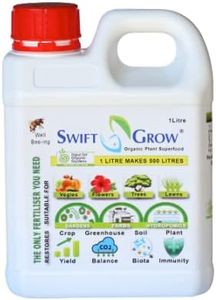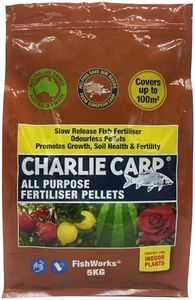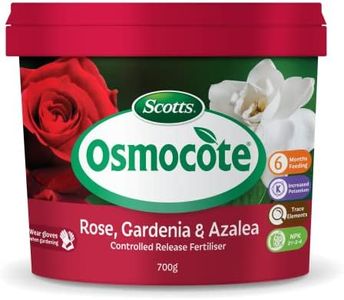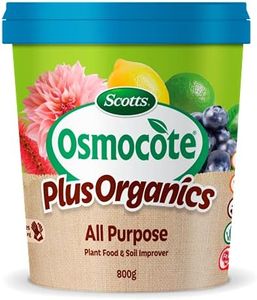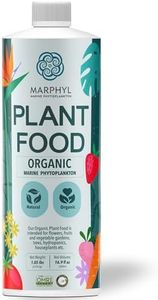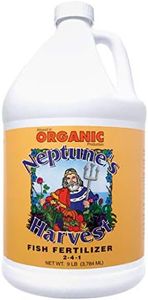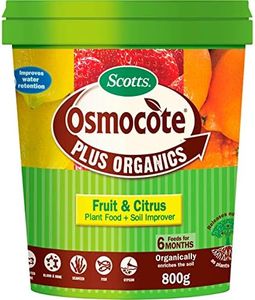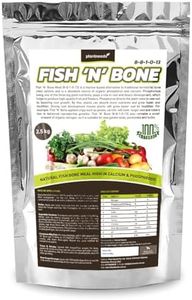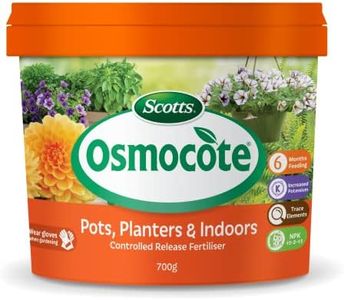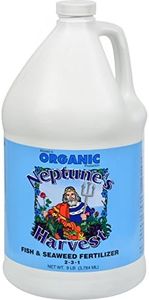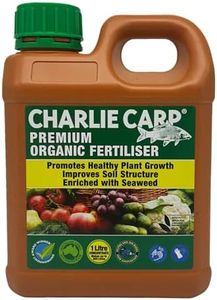We Use CookiesWe use cookies to enhance the security, performance,
functionality and for analytical and promotional activities. By continuing to browse this site you
are agreeing to our privacy policy
10 Best Organic Plant Fertilizers
From leading brands and best sellers available on the web.Buying Guide for the Best Organic Plant Fertilizers
Choosing the right organic plant fertilizer can greatly impact the health and growth of your plants. It's important to understand what your plants need and how a fertilizer can meet those needs. Organic fertilizers are derived from natural sources and are designed to feed the soil, which in turn nourishes your plants. When picking a fertilizer, pay attention to your plant type, the intended application (garden, potted plants, lawns), and soil condition. By matching the fertilizer's characteristics to your specific gardening situation, you can achieve strong, healthy growth with environmentally-friendly methods.N-P-K RatioThe N-P-K ratio stands for Nitrogen (N), Phosphorus (P), and Potassium (K), which are the three primary nutrients needed by plants. This ratio is usually displayed as three numbers on fertilizer packaging. Nitrogen helps with leaf growth, phosphorus promotes strong roots and flowers, and potassium aids in overall plant health. Low ratios are suitable for maintenance or sensitive plants, middle ranges support flowering and fruiting, and higher numbers promote vigorous growth. Choosing the right ratio depends on the type of plants you have—leafy vegetables benefit from higher nitrogen, while flowering or fruiting plants need more phosphorus and potassium.
Source of IngredientsOrganic fertilizers use a variety of materials such as compost, manure, bone meal, blood meal, or kelp. The source matters because it affects nutrient availability, release speed, and suitability for different types of plants. For slow and steady growth, compost or manure-based fertilizers are ideal. Fast-acting sources like blood meal deliver a quick nutrient boost. Understanding what each source provides helps you match the fertilizer to your plant’s growth cycle—use slow-release for long-term nourishment and quick-release when plants show signs of deficiency.
Release SpeedRelease speed refers to how quickly the nutrients become available to plants. Slow-release fertilizers provide nutrients over weeks or months, while fast-release fertilizers deliver nutrients almost immediately. Slow-release options are good for regular maintenance, especially in garden beds or perennial plantings. Fast-release types can quickly fix nutrient deficiencies or support fast-growing annuals. Assess your plant’s growth pace and current health; if steady growth is the goal, opt for slow-release. For urgent needs or rapid plant development, a faster release is beneficial.
Application MethodThe way you apply fertilizer can range from granules, powders, and pellets to liquid forms. Granules and pellets are easy for spreading on soil and are often chosen for garden beds. Liquid fertilizers are mixed with water and are better for foliar feeding or container plants, as they act quickly. Powders are versatile but require mixing. Consider your gardening habits and plant setup—choose a form that fits easily into your routine and reaches your plants’ roots effectively.
Soil Improvement QualitiesSome organic fertilizers also improve soil structure by increasing its ability to retain water and nutrients or by feeding beneficial microbes. Ingredients like compost and worm castings are especially good for this. If your soil is poor or your garden is newly established, look for fertilizers with added soil improvement benefits. Healthy soil results in healthier plants, so this is crucial if you’re looking at long-term benefits, not just quick growth.



